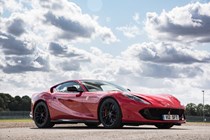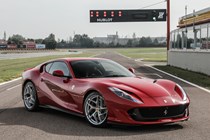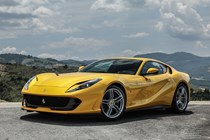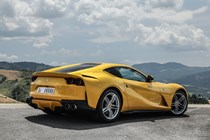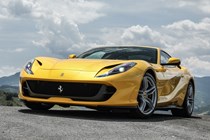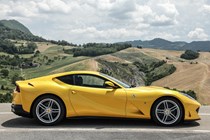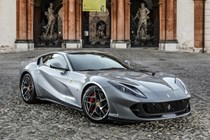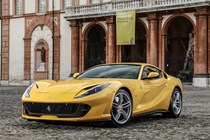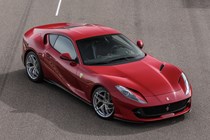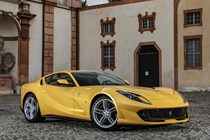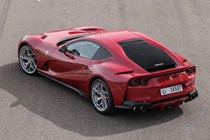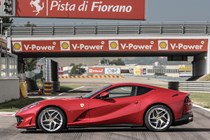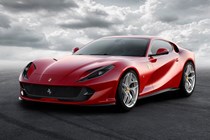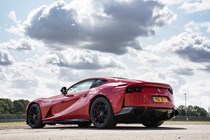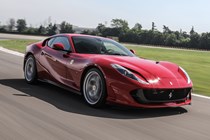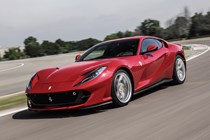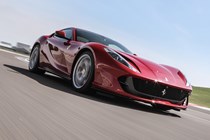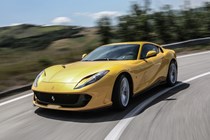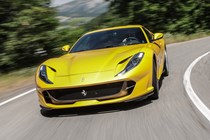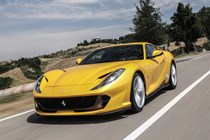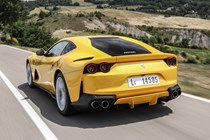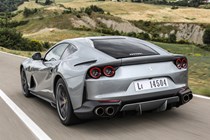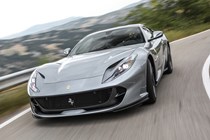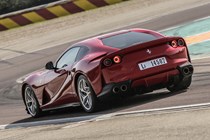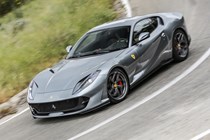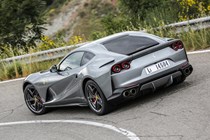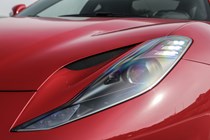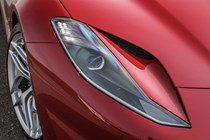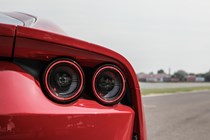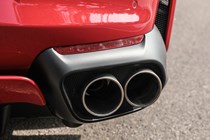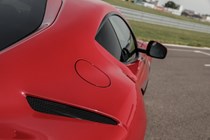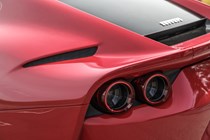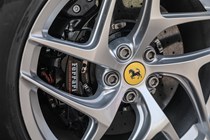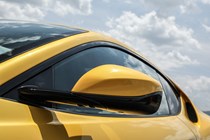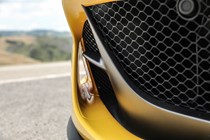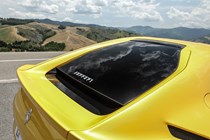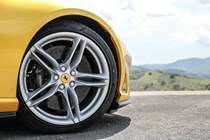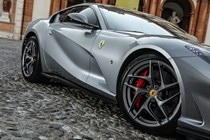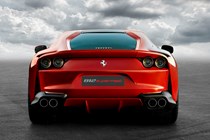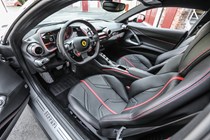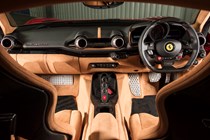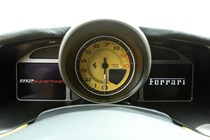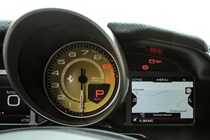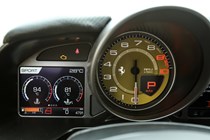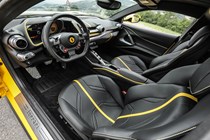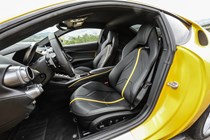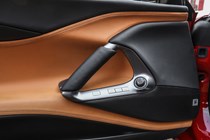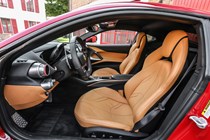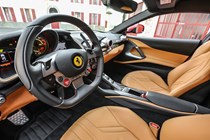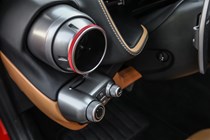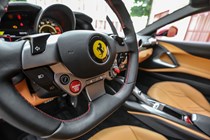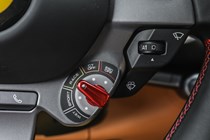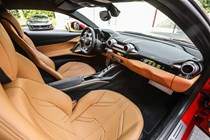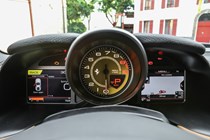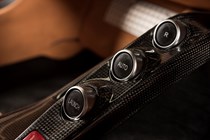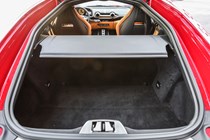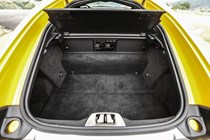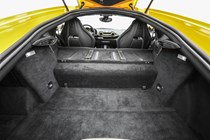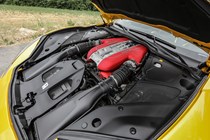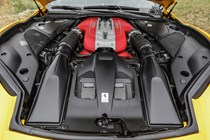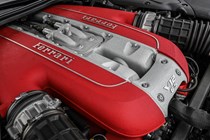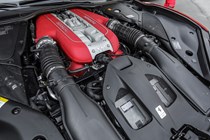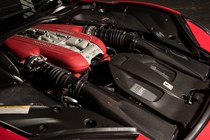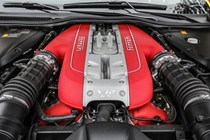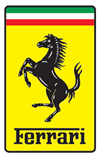
Ferrari 812 Superfast engines, drive and performance

- Simply incredible 6.5-litre V12 engine
- Lightning-quick seven-speed DCT transmission
- Spine-tingling engine sound
Even by Ferrari standards, it’s an extraordinary piece of engineering. Unlike almost every other petrol (or diesel) engine on sale today, it’s naturally aspirated. There’s no turbos or superchargers to increase power and/or reduce emissions, instead the 812 Superfast’s 6.5-litre V12 combines old-school displacement with cutting edge technology.
The figures speak for themselves. Output is 800hp and 718Nm of torque, the former finding its peak at 8,500rpm. 0-62mph takes a mere 2.9 seconds, while 0-120mph is completed in 7.9 seconds. Top speed, meanwhile, doesn’t arrive until you hit 211mph. For context, the VW Golf GTI (a highly capable performance hatchback) produces 245hp and manages the 0-62mph sprint in 6.2 seconds…

What’s also important to note is that 80% of the 812 Superfast’s maximum torque figure is available from just 3,500rpm, so unlike many naturally aspirated engines, there’s real in-gear pulling power.
The end result is what can only be described as truly breath-taking – and often scary – amounts of available performance. To meter this out, the Ferrari manettino switch on the steering wheel acts as a drive mode selector and lets you cycle through various presets that alter how the car behaves.
Settings include Wet, Sport, Race, CT off and ESC off – the latter two being best left to drivers who are confident with turning the traction and stability control off on an 800hp car. The first three however tweak various chassis, steering, power, transmission and exhaust presets, with the safest Wet mode allowing a gentler introduction.
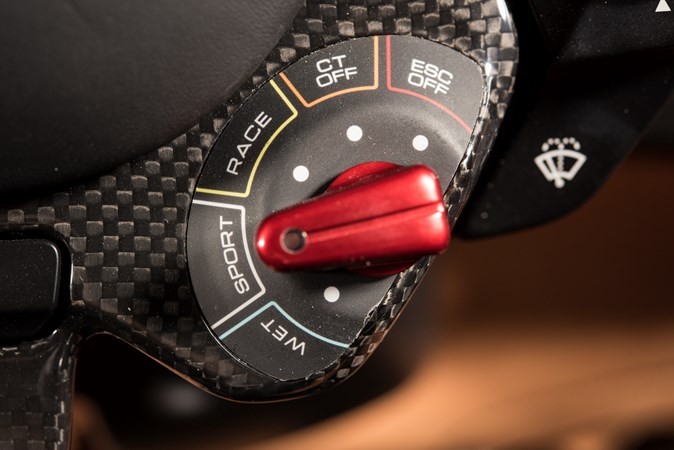
The truth is, however, that whatever mode you have the 812 Superfast in it’s going to excite its occupants by the bucketload. Throttle response is almost instantaneous, while the seven-speed DCT gearbox rattles through ratios with racing car precision. For those not used to such huge power reserves, the temptation to pull the upshift paddle at around 4-5,000rpm is strong, yet the V12 engine does its best work as you reach 6,000rpm and above – the type of revs where most cars would be running out of puff.
Beyond this point lives a howling, shrieking exhaust and levels of acceleration that scarcely feel legal on the public road. It goes without saying that you can’t simply put your foot down in the 812 Superfast without a thorough examination of the road ahead. Only once you’ve scanned the tarmac for dampness, other vehicles and surface condition can you think about applying 100% throttle. And even with all the safety and assist systems in the world, this is still one of the wildest road-going Ferraris of the 21st century.
Razor-sharp handling defies hefty proportions
- 1.6-tonne kerbweight and super-wide dimensions
- Huge amounts of technology to assist with handling
- Compromised everyday driveability
There’s no doubt that the 812 Superfast is far more usable than Ferraris of 20 years ago, yet there’s still the overwhelming feel that this is a hypercar disguised in GT clothing and marketing. Sure, it’s got most of the everyday tech that we take for granted in your average hatchback (even if Apple CarPlay is a pricey option), but driving the 812 Superfast at low speeds – or even cruising in it – isn’t without faults.
It’s incredibly wide for example, and the overall ride is firm. And while this is to be expected in such a car, it does not have the required softness in the chassis to properly absorb everyday bumps and cracks in the road. High speed cruising, too, is punctuated by plenty of background noise. In context, the 812 Superfast stops short of being uncomfortable, yet there’s always a feeling that the car is tensed. Desperate to do something less mundane then simply cruising on the motorway or trundling around town.
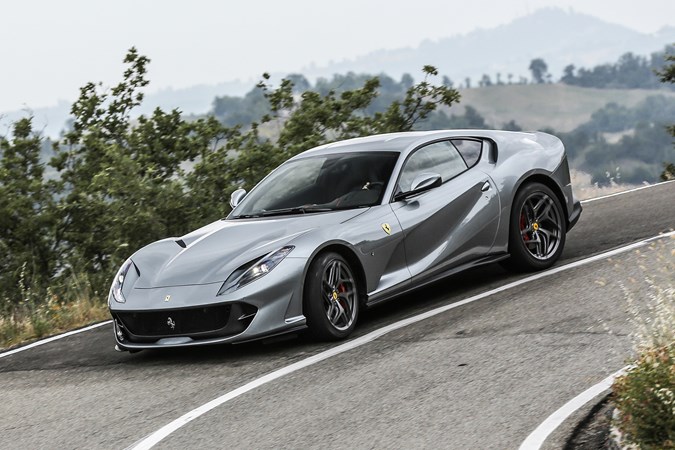
But then, there is so much to be in awe of at the way the 812 Superfast handles, many will forget its inadequacies as an everyday car. Take it to a – reasonably wide – country road and the way it darts from corner to corner without so much as pausing for breath is deeply addictive. Granted, it’s not the same pure handling experience as you’d get from something smaller and lighter, but there’s no denying how wonderfully alert and special it feels.
Grip levels from the front wheels are prodigious, while the rear of the car delivers plenty of traction but then easily slips into wheel-spinning oversteer with a generous prod of the throttle pedal. The sheer size and power of the 812 Superfast means you have to be respectful regardless of the various driver assistance systems, yet there’s infinite fun to be had once you get used to everything.
Technology such as Virtual Short Wheelbase 2.0 (PCV), Ferrari Peak Performance (FPP) and Ferrari Power Oversteer (FPO) also help to improve the driving experience. The first combines the Electric Power Steering (EPS), rear-wheel steering and other onboard computers to deliver response time and agility through the steering.
Meanwhile, FPP varies the steering wheel torque to improve the feedback of grip from the wheels and FPO helps the driver realign the car (once traction has been broken). All very artificial and a million miles away from the first Ferrari supercars, yet the end result is impressive.


